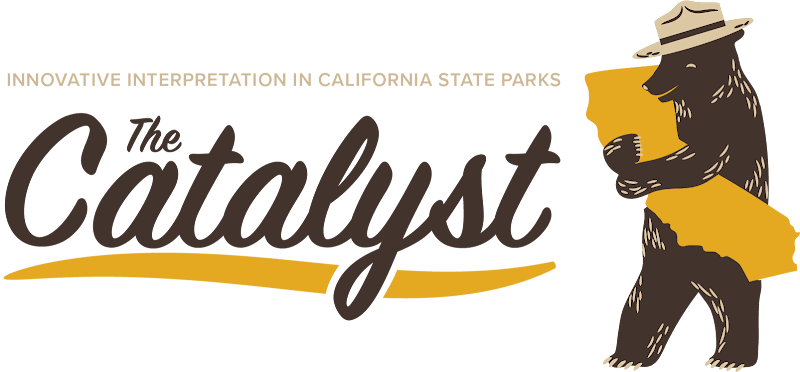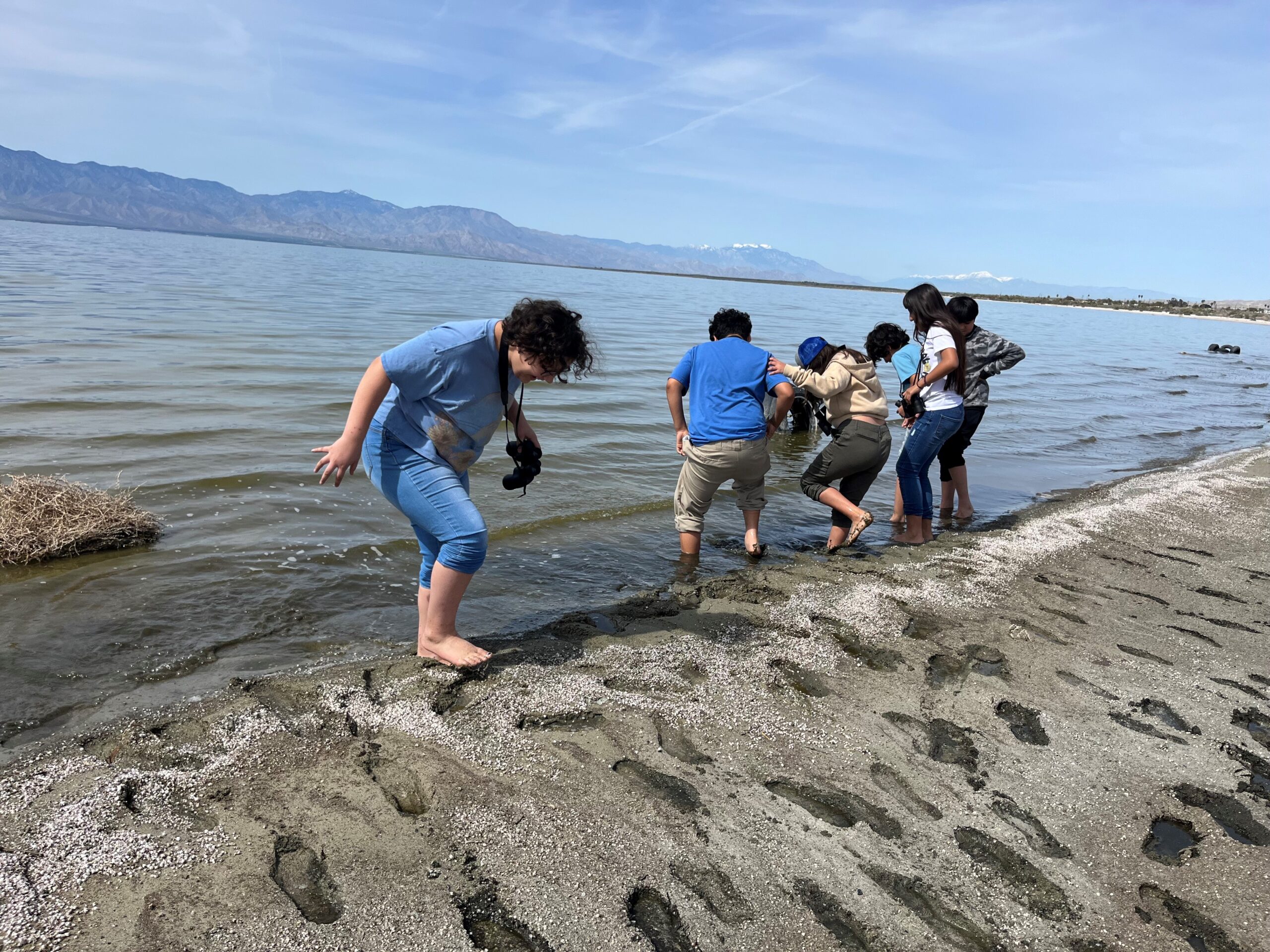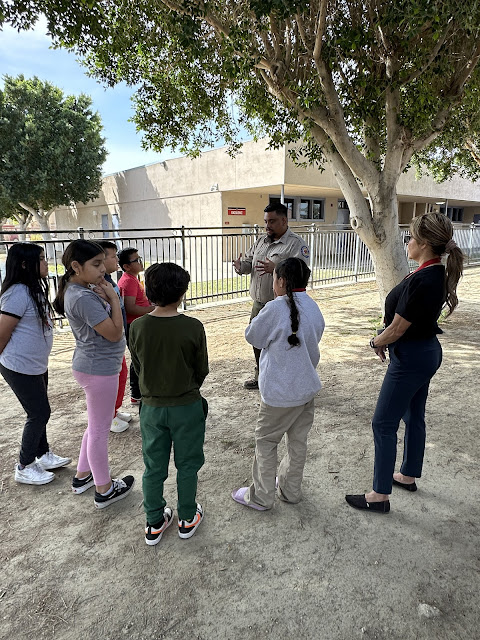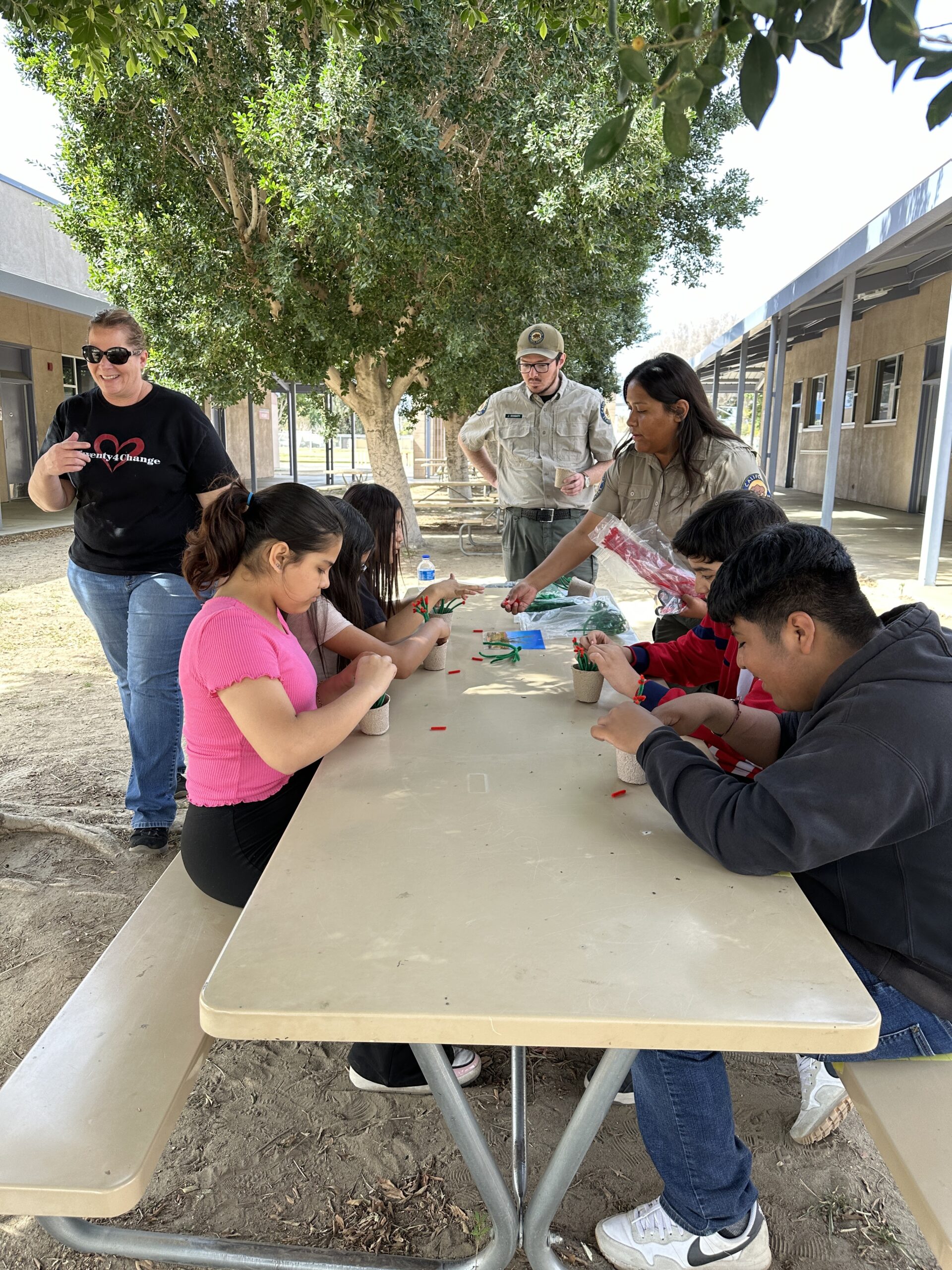
When the Kids Who Live the Closest Don’t Come to the Park
Outside the Box Outreach in the Ocotillo Wells District

Have you ever asked, “How do we reach the audience that needs us most?” Two interpreters from the Ocotillo Wells District are addressing this question through community outreach, achieved by staying open to all possibilities. Parks in the district tend to serve visitors who are traveling through the area, or who have come specifically to enjoy recreational opportunities. What about the local communities?
Taylour Unzicker, State Park Interpreter III for the district, shared CalEnviroScreen 4.0 produced by the Office of Environmental Health Hazard Assessment. This interactive map allows users to see the intersection between socio-economic levels and exposure to environmental hazards affecting our health. Imperial County has some of the greatest socio-environmental challenges across the state. Taylour has used it to demonstrate the potential positive impacts of parks’ outreach programs. He expressed the importance of seizing opportunities to interact with local students to show them what is special about their area, giving them “a feather in their cap” and instilling a sense of pride and place. Taylour credits his team for building relationships and expanding programming. Meet Jose Garcia and Cassandra VanDyne, whose work recently caught our attention because of the communities they reach in a part of California which many bypass.
Jose Garcia, Ocotillo Wells SVRA State Park Interpreter I, born to parents who immigrated to the U.S. and settled in southern California, had not been to a park until he was 18 years old. Growing up in Venice, CA, Jose told us the Boys & Girls Club opportunities with the support of the Mountains Recreation & Conservation Authority (MRCA) made the difference in his life, introducing him to the benefits of spending time outdoors. Jose’s first camping trip took him to Sequoia and Yosemite National Parks. He then explored Yellowstone and other portions of the Rockies! He loved it all and wanted to share his discoveries and the joy he found in the natural world, with his own family members and others. Jose explained that in his community, there is an equation of being outdoors with unsheltered status; that “camping out” carried a stigma. In addition, families with parents working long hours, perhaps at multiple jobs, for low pay don’t feel they have the money or time to be in parks.
While shopping locally one day, Jose began a conversation with an older woman. They spoke of their jobs. After describing his, the woman mentioned that she knew many teachers who would love to participate in parks activities. Subsequently Jose learned about the Desert Sands Unified School District’s participation in a federally funded program meant to provide migrant families with after school and other opportunities. Called the Migrant Saturday Academy, Jose has begun introducing students to the outdoors through school site visits and plans to continue his Saturday visits throughout the summer. They talk about what they will see around them when outside, how animals adapt and survive, increasing their comfort levels through understanding. The communities are within an hour of Ocotillo Wells and Anza-Borrego, but most students have never had the opportunity to visit these or other parks.

Jose’s own background, bilingual skills, and ability to relate to their families’ situations allows students to see themselves in him and build rapport. Jose’s employment with the department embodies one of the objectives of Path Forward our Strategic Plan: “Develop a departmentwide diversity, equity, and inclusion action plan for the current and future workforce” (Theme 4: Equity, Goal 5, Objective 4).
Another community benefits from presentations by Cassandra VanDyne, State Park Interpreter I, stationed at Salton Sea SRA. Growing up in San Diego, Cassandra’s background includes four years in Outdoor Education working with 6th graders during their residential camp experiences, and is a credentialed teacher of math and science. This past fall, Cassandra began working with Project ASPIRE (After School Program Integrating Recreation and Education), a program of the Imperial County Office of Probation. As described by the Holtville Tribune, Project ASPIRE “is an after-school program established by the Youth Services Division of the [County Probation] Department.” The program is designed to reach children of ages nine to thirteen years.
In Cassandra’s case, Project ASPIRE found her. ASPIRE currently has three program sites -Westmoreland, Niland, and Heber – with plans to add a fourth at Seeley. Two site leaders came to Ocotillo Wells SVRA in the fall of last year. They went to the Visitor Center and toured a portion of the park. A subsequent meeting of all site leaders resulted in the formulation of a plan: there would be scheduled site visits in their communities first, to increase comfort levels and talk about expectations.

Led by Jose or Cassandra, and assisted by Senior Park Aides, Maritza Mendoza and Jonathan Doughty, the presentations include taxidermy specimens of desert animals, skins, and scats. Jose hides the taxidermy specimens on the school grounds, in an outdoor “scavenger hunt.” Cassandra facilitates students to make connections between the shape of a coyote’s teeth and their omnivorous diets. Trust and an established relationship with the interpreter help students when they come into the park and experience the outside world. Sea and Desert Interpretive Association, the Cooperating Association for Salton Sea SRA, covers entry fees for Project ASPIRE participants when Salton Sea is the park visited. There are definitely “Aha!” moments for the students. Discovery of a recently deceased barn owl started conversations about the challenges faced by animals; the students’ growing understanding evidenced by a twinkle in their eyes.
